Stewards of the Forest:
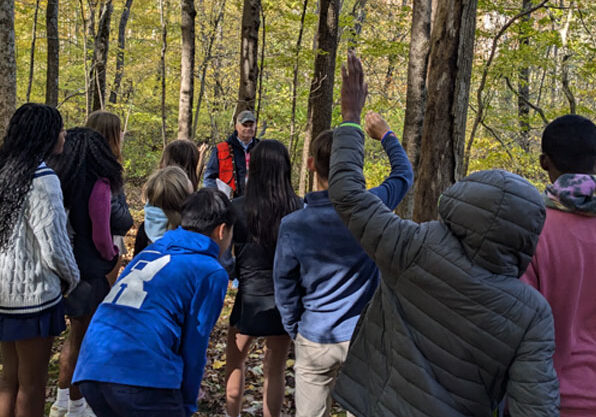
Renbrook School’s Living Classroom on Avon Mountain
An interview with Lincoln Vaughan ’91, Upper School Science Department Chair and alumnus
Bringing Learning to Life in the Forest
High atop Avon Mountain, Renbrook School’s 75-acre campus is more than a scenic backdrop—it’s an extension of the classroom. Guided by a spirit of stewardship and scientific inquiry, the school is deepening its connection to the land through a new forestry assessment and management initiative. This initiative is in partnership with the Connecticut Department of Energy and Environmental Protection (DEEP).
This work reflects Renbrook’s mission of bringing learning to life—transforming the school’s forest into a living laboratory where students learn to study, protect, and sustain their environment.
A Partnership Rooted in Stewardship
Last year, Lincoln Vaughan ’91, Upper School Science Department Chair and alumnus, reached out to DEEP’s Forestry Division for a professional assessment of the school’s forest lands. The property encompasses woodlands, wetlands, fields, trails, and pond. The intent was to explore how the land can be managed to provide additional educational benefits and to serve as an example of stewardship for students.
David Irvin, DEEP Central District Service Forester visited campus in June 2025. He assessed the forest vegetation including tree cover, forest understory, and ground cover. He reviewed the forest health, assessing fire hazards, invasive species, deer impact, noninvasive insects, invertebrates, disease, and storm impact. Irvin further reviewed wildlife impact, and the impact of recreational and educational uses of the land.
Irvin provided Renbrook School with a 42-page post-visit report complete with silvicultural forest management recommendations and possible funding resources. The report is the summary of field observations and discussion of objectives. It is intended to provide options, opening steps for additional conservation, and more general educational information for faculty, regarding the importance of managing the property for both very specific and broad outcomes. His findings offer a blueprint for integrating forest management with education—demonstrating how science, conservation, and community can work hand-in-hand.
“We’re simply temporary caretakers of this space,” says Vaughan. “We want to manage it in a way that will be resilient and vibrant for future generations—not just five years, but fifty or a hundred or more.”
Our Goals for the Forest
Renbrook’s forestry initiative aligns with six core objectives:
- Promote safe outdoor educational opportunities across all grade levels.
- Improve forest health and resilience through informed management.
- Protect water, wetlands, and state-listed species.
- Diversify wildlife habitat for native species.
- Promote climate-smart forestry and carbon sequestration.
- Assess and mitigate fire risks on campus.
These goals directly connect to Renbrook’s Year of Stewardship, reinforcing the school’s ongoing theme of caring for both natural and human communities.
Classrooms Without Walls in Every Division
Upper School
The DEEP report is already enhancing how students engage with their environment. Upper School students met with Forester David Irvin in the forest this fall, observing trees and habitats firsthand as part of their dendrology unit and learning from Irvin’s perspective.
“It’s our responsibility to observe, learn, assess, act, and communicate,” says Vaughan. The Grade 7 Pond Vantage Point Project is an excellent example. Seventh-grade students go to the pond, on average, 15-16 times over the school year. Each student is assigned a specific space at the pond that they return to on each visit to observe the surrounding environment.
This is a time of quiet–of looking, listening, hearing, feeling, observing, and documenting. Students observe the same space through each season and watch how the space changes. They observe the effects of invasive species in the dead white ash trees standing on the north side of the pond that were devastated by the emerald ash borer insect, introduced to the United States in 2002. They can see these limbless snags standing there. “There’s no substitute for being outside and interacting with living diversity,” says Vaughan. “Our students see the effects of invasive species, storm damage, and seasonal change up close.”
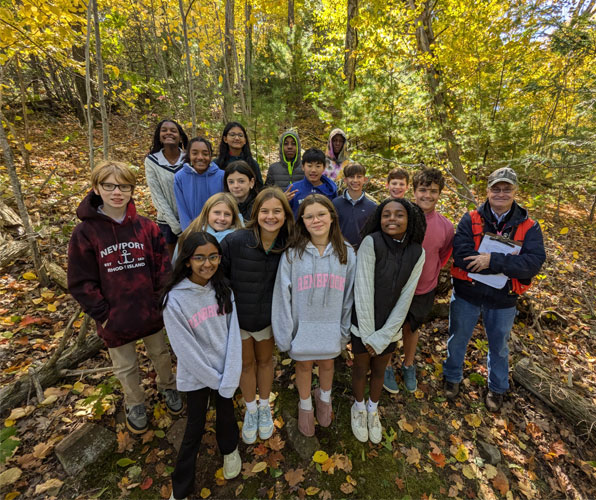

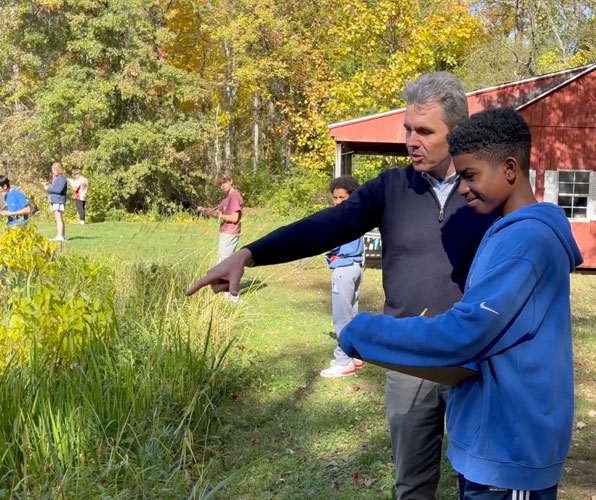
Lower School
STEM teacher Jess Wawzynecki has established a ten-by-ten-meter forest monitoring plot near the pond, inspired by a professional development opportunity she engaged in at Harvard Forest. Lower School students will track environmental change over time, contributing to a longitudinal dataset that connects classroom learning with real-world ecology.
Third graders explore the Renbrook forest in their Westward Expansion Unit. In this unit, each student adopts a settler identity, complete with a family, occupation, livestock, and responsibilities. This identity shapes their decisions as they prepare for the journey by packing their “wagons” with appropriate items, ensuring weight limitations are met. Students venture into the great outdoors on Renbrook’s campus, which transforms into “The Oregon Trail.” In wagon teams, they construct covers for “Radio Flyer” wagons and haul them along the trails. Collaboration and communication are key as they navigate the challenges of the land, make decisions, and face simulated disasters. They also encounter landmarks like Independence Rock and the Snake River.

Beginning School
In the Beginning School, our youngest learners engage outdoors every day. The children develop a deep respect for the environment and the creatures that inhabit it through various curriculum units and play-based learning.
The mud kitchen and gardens in the Preschool play area provides countless opportunities to literally get their hands dirty and observe the many insects and birds that share their space. Kindergarten students hike the Renbrook Trails every Friday all year long exploring the forest, a magical space for kids’ brains and bodies. Our Junior Kindergarten students engage in both a Pond Unit and a Monarch Butterfly Unit. They explore the life cycle of both frogs and butterflies, marveling at the transformation of life, right here at school.
The Beginning School has built and maintains a beautiful butterfly garden with an array of colored flowers and milkweed for the butterflies and other beneficial pollinators. Each fall, teachers collect caterpillars from the pollinator garden and students observe the amazing transformation from caterpillar to chrysalis to butterfly. Once the butterflies are ready, students help bid them farewell and release them on their journey to Mexico for the winter!
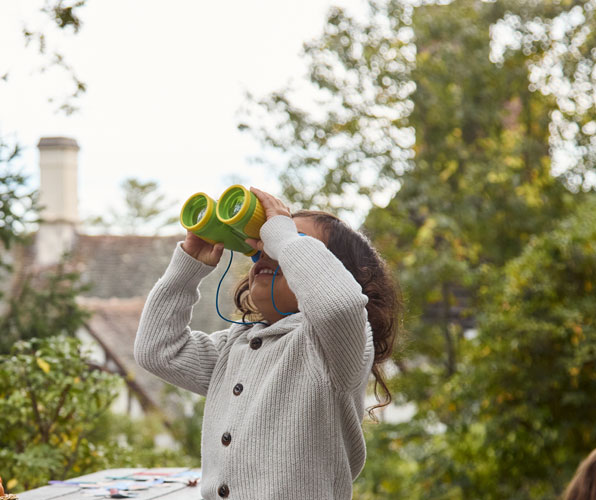
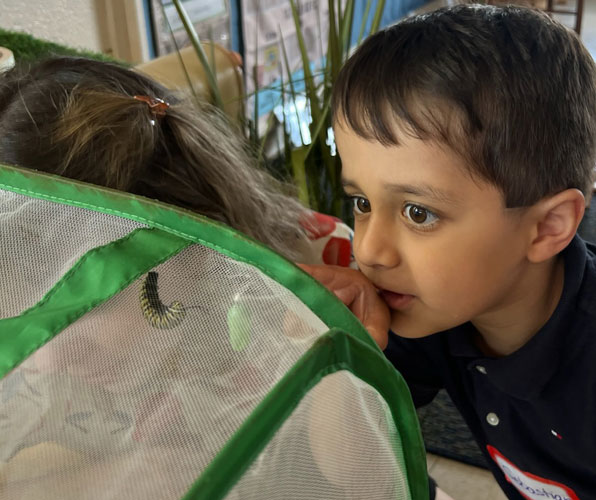

Discovering the American Chestnut
Renbrook’s stewardship extends beyond observation to active restoration. In 2022, Vaughan’s Life Science students discovered three American chestnut trees in Renbrook’s forest—one of which showed promising health and resistance to blight.
Partnering with The American Chestnut Foundation (TACF) and Eversource Energy, Renbrook hosted a hand-pollination project led by TACF’s Connecticut chapter president, Jack Swatt, using pollen from a flowering chestnut in Mystic, CT
Though the first pollination did not yield viable nuts, the process gave students hands-on experience in conservation biology, dendrology, and citizen science. Renbrook plans to continue these efforts each summer, contributing to the larger mission of restoring the American chestnut to Eastern forests
“It’s a great example of how we can bring history, culture, and science together,” says Vaughan. “Our students learn that stewardship means acting with knowledge and responsibility.”
Science, History, and Technology Intertwined
The forestry report also introduced students to cutting-edge tools such as LiDAR mapping, a remote sensing technology that reveals the topography and historical structures beneath forest canopies. Students can use these maps to visualize the campus in new ways—identifying wetlands, floodplains, and remnants of farmland.
This integration of modern technology with natural history reflects Renbrook’s philosophy of innovative learning rooted in place—where scientific inquiry meets cultural awareness and environmental ethics.
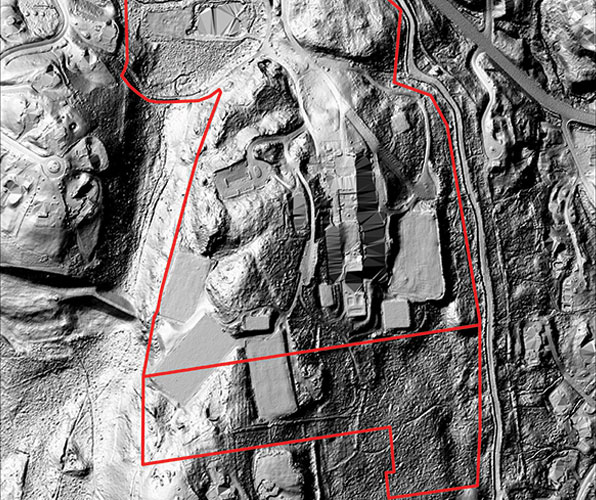
A Legacy of Stewardship
Lincoln Vaughan’s work carries forward a tradition begun in his own student days. In 1991, the same year he graduated, Headmistress Jane Shipp inaugurated Renbrook’s first Year of Stewardship, a theme that continues to inspire today’s initiatives.
The forestry project embodies that legacy, connecting past and present Renbrook generations through shared care for the land. New student Campus Stewards—eighth graders selected for a leadership project in environmental education—are now taking part in maintaining trails, monitoring habitats, and educating peers about Renbrook’s ecological heritage.
Learning That Lasts a Lifetime
From forest surveys to the Pond Vantage Point Project, Renbrook’s outdoor programs exemplify learning through doing. Students aren’t just learning about ecosystems; they are participating in them, gaining a deeper appreciation of interconnected life and responsibility.
This approach, blending academic rigor, character development, and environmental awareness, is what makes Renbrook’s outdoor education truly transformative.